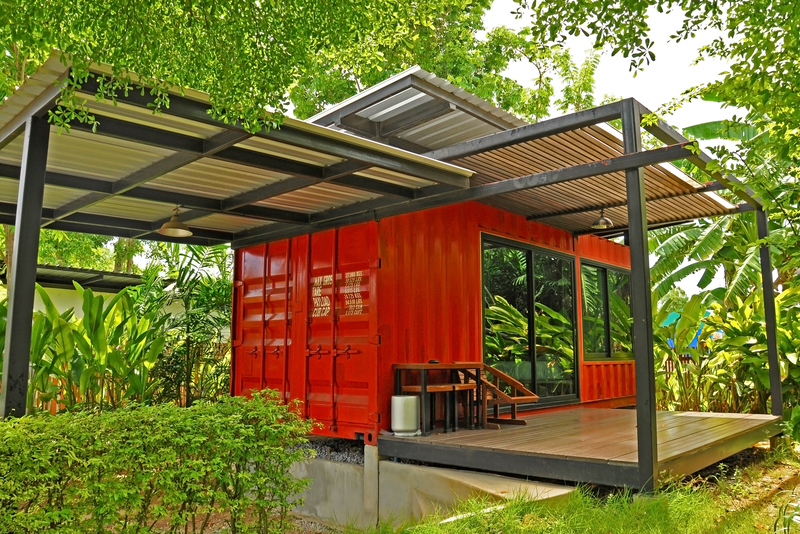Landfill-Reducing Strategies for Green Waste
Posted on 24/02/2025
Green waste, also known as organic waste, constitutes a significant portion of municipal solid waste. Comprising yard clippings, food scraps, and other biodegradable materials, green waste is often directed to landfills where it can create environmental challenges. By adopting landfill-reducing strategies, we can better manage green waste, turning potential pollutants into valuable resources.
Understanding Green Waste
Green waste is a category of organic waste that is predominantly biodegradable and can be decomposed aerobically or anaerobically. Common examples include grass clippings, garden trimmings, food scraps, and tree branches. The improper disposal of green waste in landfills not only consumes valuable space but also contributes to greenhouse gas emissions due to anaerobic decomposition processes that produce methane, a potent greenhouse gas.

The Environmental Implications of Landfilling Green Waste
When green waste is sent to landfills, it decomposes anaerobically and produces methane. Methane is a greenhouse gas that is about 25 times more effective at trapping heat in the atmosphere than carbon dioxide over a 100-year period. This contributes significantly to climate change and global warming. Additionally, the leachate produced from decomposing organic waste can contaminate groundwater supplies, posing risks to human health and the environment.
Strategies for Reducing Green Waste in Landfills
Adopting landfill-reducing strategies for green waste requires a multi-faceted approach that encompasses waste prevention, resource recovery, recycling, and community participation.
1. Composting
Composting is one of the most effective ways to manage green waste. By converting organic waste into compost, we not only divert waste from landfills but also create a valuable soil amendment. There are several types of composting methods:
- Backyard Composting: Individuals can compost at home using simple methods. This involves layering green and brown materials, maintaining adequate moisture, and occasionally turning the pile to aerate it.
- Community Composting: Some communities offer composting programs where residents can drop off their green waste. This compost is then processed and used in community gardens and parks.
- Commercial Composting: Large-scale composting facilities can handle a significant volume of green waste, producing high-quality compost for agricultural and landscaping purposes.
2. Vermicomposting
Vermicomposting uses worms, specifically red wigglers, to decompose organic waste. The process results in worm castings, which are highly nutritious for plants. Vermicomposting can take place on a small scale in homes or on a larger scale in controlled environments.
3. Anaerobic Digestion
Anaerobic digestion is a process that breaks down organic waste in an oxygen-free environment, producing biogas (methane and carbon dioxide) and digestate, a nutrient-rich byproduct. Biogas can be captured and used as a renewable energy source, reducing reliance on fossil fuels. This method is highly suitable for managing food waste and other high-moisture organic materials.
Green Waste Recycling Programs
Municipalities can implement green waste recycling programs to divert organic waste away from landfills. These programs often include curbside collection services, where residents are provided with bins specifically for green waste. The collected waste is then taken to composting or anaerobic digestion facilities. Successful programs are typically supported by educational initiatives that inform residents about the benefits of green waste recycling and provide instructions on proper waste separation.
Policies and Regulations
Government policies and regulations play a crucial role in promoting green waste management. Some effective measures include:
- Landfill Bans: Prohibiting the disposal of organic waste in landfills compels individuals and businesses to seek alternative waste management solutions.
- Incentives: Offering financial incentives for businesses and individuals who engage in composting and recycling can boost participation rates.
- Mandatory Organics Recycling: Some regions have laws requiring certain businesses, such as restaurants and grocery stores, to separate and recycle their organic waste.
The Role of Community Engagement
Building community awareness and engagement is essential for the success of green waste management programs. Educational campaigns, workshops, and community composting projects can foster a sense of responsibility and collective action. Here are some approaches to enhance community participation:
- Education and Outreach: Inform residents about the environmental benefits of reducing green waste and provide practical tips on composting and proper waste separation.
- Community Gardens: Establish community gardens where compost produced from green waste can be used. This not only promotes sustainable practices but also builds community ties.
- Volunteer Programs: Engage volunteers to participate in composting projects, waste audits, and educational events.
Technological Innovations
Technological advancements can further enhance the efficiency and effectiveness of green waste management. Some promising innovations include:
- Smart Bins: Equipped with sensors, these bins can monitor waste levels and contamination, enabling better collection scheduling and reducing operational costs.
- Biochar Production: Pyrolysis technology can convert green waste into biochar, a stable form of carbon that can improve soil fertility and sequester carbon.
- Mobile Composting Units: Portable composting units can be deployed in urban areas, making it easier to process green waste locally.

Case Studies: Successful Green Waste Management Initiatives
Several cities and regions have set exemplary standards in green waste management. For instance:
- San Francisco, USA: San Francisco has implemented a comprehensive composting program that mandates the separation of organic waste. The city's zero waste policy aims to divert all waste from landfills by 2020.
- Milan, Italy: Milan introduced a city-wide food waste collection program in 2012, achieving a remarkable diversion rate of 85%. The collected waste is processed into biogas and compost.
Conclusion
Effectively managing green waste is integral to reducing the burden on landfills and mitigating the adverse environmental effects of waste disposal. By embracing composting, anaerobic digestion, recycling programs, and technological innovations, we can transform green waste from a liability into a resource. Community engagement and supportive policies also play crucial roles in ensuring the success of these initiatives. Ultimately, the concerted efforts of individuals, communities, and governments can lead to more sustainable waste management practices and a healthier planet.

 020 3744 5712
020 3744 5712










